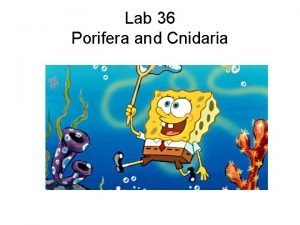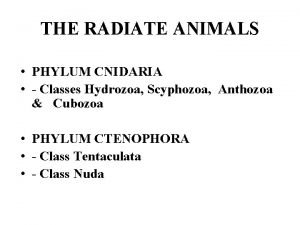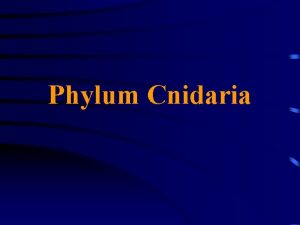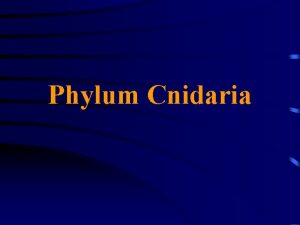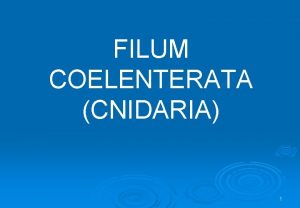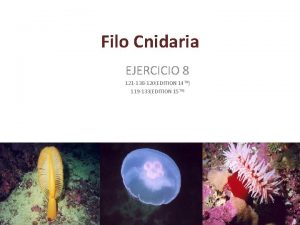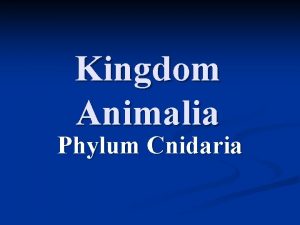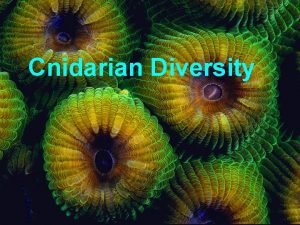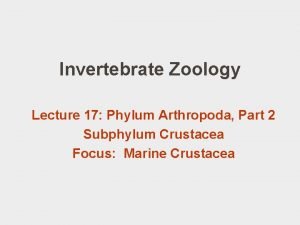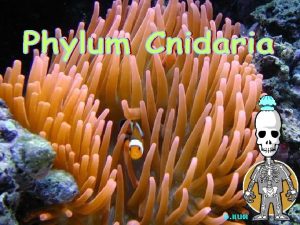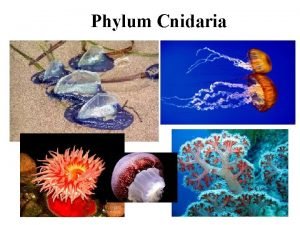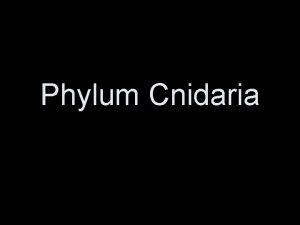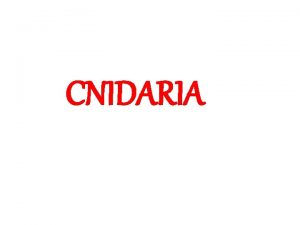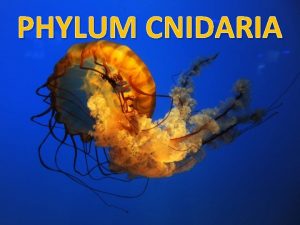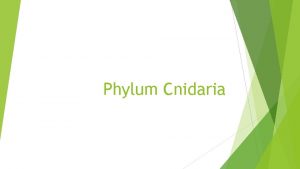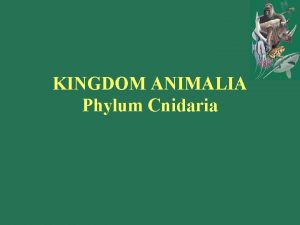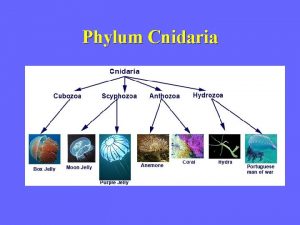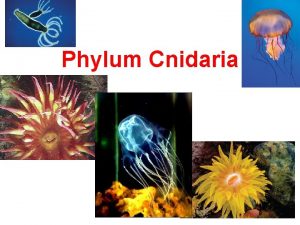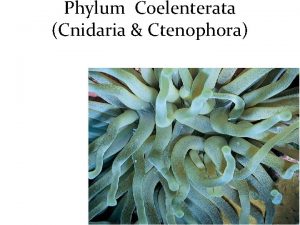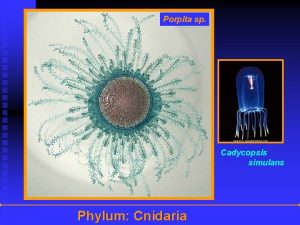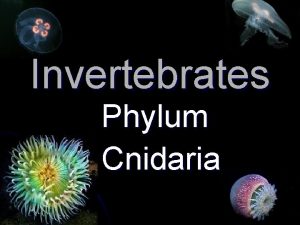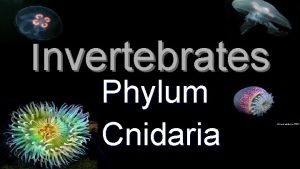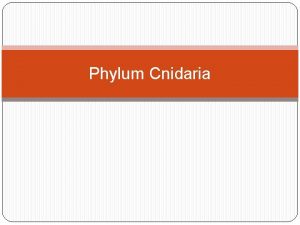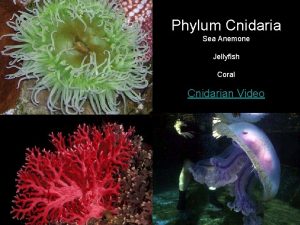Phylum Cnidaria Marine Science Cnidarian Characteristics stinging cells
















- Slides: 16

Phylum Cnidaria Marine Science


Cnidarian Characteristics -stinging cells ● Cnidocytes/nematocytes https: //www. youtube. com/watch? v=IJid. AI 1 WASo -radial symmetry -many are predators -have true tissues ● Mesoglea (the jelly)


A Closer Look at Cnidocytes Cnida/nematocyst: the stinging organelle of the cell. -found on tentacles 1. ) touch activated trigger 2. ) barb and coiled up thread eject 3. ) barbs and thread attach to prey’s flesh

Phylum Cnidaria: Jellyfish Anemones Corals Hydroids

Class Hydrozoa (hydroids) -most are colonial organisms -some are sessile, some are planktonic. -some secrete a Ca. CO 3 skeleton (fire coral). Hydra


Class Scyphozoa (jellyfish) -True jellyfish! -Mostly planktonic -Majority of their life is spent in the medusa stage. https: //www. youtube. com/watch? v=y. Qdu. Hyi. We 9 o Upside-down jellyfish: has symbiotic dinoflagellates within it’s body

Class Cubozoa (box jellyfish) -predators, eat fish -strong swimmers -the bell is box shaped -tropical organisms -EXTREMELY venomous

Irukandji Box Jellyfish -2 cm diameter -Found in Australia -Believed to be the most venomous organism in the world.

Class Anthozoa (sea anemones, true corals) -benthic -live their lives almost exclusively as polyps -they still have tentacles and nematocysts -many of them (corals) have symbiotic dinoflagellates (Symbiodinium) Need to stay in shallow waters -corals have a Ca. Co 3 skeleton and grow from 0. 5 to 2 cm a year!


Cool Videos! https: //www. youtube. com/watch? v=Nu. Ct 0 -m 3 VI 8 https: //www. youtube. com/watch? v=Lo. MEm. KNGNEg https: //www. youtube. com/watch? v=Bn 2 xk. IJhte 4 https: //www. youtube. com/watch? v=-6 l. MD 9 h_ix 4

Ecological Importance -predators -some fish, sea turtles and molluscs feed on cnidarians. -symbiotic relationships

Ecological Importance Formation of habitats ● coral polyps→ coral reefs → 3 -dimensional hard structures ● water ‘filtration’ (suspension-feeding) ● defense from wave action ● carbon sink (Ca. CO 3)
 Cnidaria symmetry
Cnidaria symmetry 2 body forms of cnidarians
2 body forms of cnidarians Turritopsis dohrnii
Turritopsis dohrnii Features of cnidaria
Features of cnidaria Phylum cnidaria general characteristics
Phylum cnidaria general characteristics General characteristics of cnidaria
General characteristics of cnidaria Cnidaria tissue layers
Cnidaria tissue layers Polyp coelenterata
Polyp coelenterata Obelia medusa slide
Obelia medusa slide Hydra and sea anemone
Hydra and sea anemone Cnidaria characteristics
Cnidaria characteristics Stinging trichomes
Stinging trichomes Alyconaria
Alyconaria Arthropoda insecta
Arthropoda insecta What is tagmatization
What is tagmatization Radial symmetry
Radial symmetry Two body forms of cnidarians
Two body forms of cnidarians

